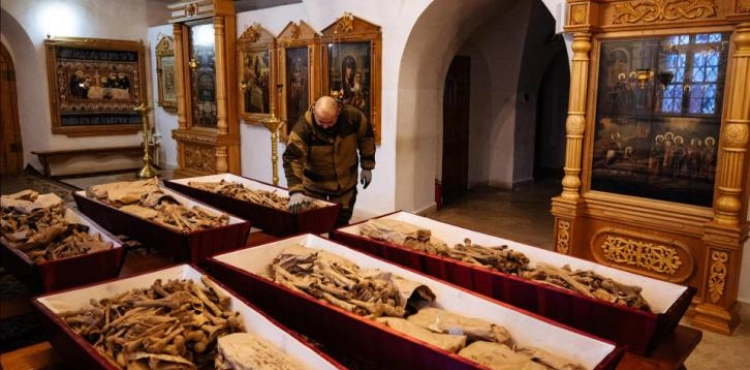The remains of Russian and French soldiers who fell during the terrible withdrawal of Napoleon Bonaparte in 1812 from Russia will be buried Saturday near the battlefield in Viasma in a moment of Franco-Russian reconciliation.
On the bicentennial of Napoleon´s death, the remains of 126 soldiers who were found in a collective pit between Smolensk and Moscow will be buried in eight coffins, in the presence of grandchildren of top Russian and French military leaders at the time.
These were 120 soldiers and three women - who followed the soldiers to sell them food - and three boys - probably drummers - who fell on the sidelines or during the Battle of Viasma on November 3, 1812, two weeks after the start of the withdrawal that reached its climax soon after. And he was terrified with the Berezina crossing, during which a large number of people were killed.
As Russia grapples with the West on many issues, the anticipated celebration on Saturday represents a symbolic moment of unity.
The Russians or the French will be buried together by artillery fire in front of about a hundred men in uniform of that era.
"Death makes everyone equal. They are all in one grave," said 74-year-old Yulia Khetrovo, a grandson of the commander in the Tsar´s army, Mikhail Konzov.
As for Prince Joachim Mora, who is a descendant of the famous marshal of the Napoleonic era, he will attend the ceremony.
Pierre Malinowski, President of the Foundation for the Development of Historical Franco-Russian Initiatives Development behind the event, welcomes the presence of these "direct descendants of the main actors in the conflict" to commemorate these soldiers "led by their ancestors."
A team of Russian and French archaeologists found the remains in 2019 in the southwest of the city of Vyazma, which has a population of 52,000. About ten years ago, the site of these remains was discovered for the first time by excavator at a construction site.
Local history buffs initially thought it was one of the many mass graves of WWII scattered across western Russia.
Finally, an expert report from the Russian Academy of Sciences confirmed that the remains belong to Napoleon campaign victims, aged between thirty and 39 years, anthropologist Tatiana Chividchikova told AFP.
Alexander Khokhlov, head of the team of archaeologists, explained that the presence of metal buttons on the uniform allowed to ensure that some of the dead "belonged to the 30th and 55th Infantry Regiments and the 24th Light Regiment of Napoleon´s Army."
This mass pit is certainly not the last in the road to Russia´s campaign in which hundreds of thousands of people were killed.












